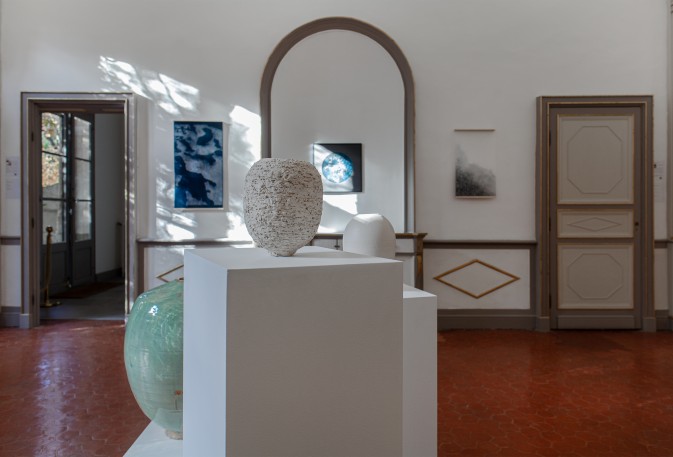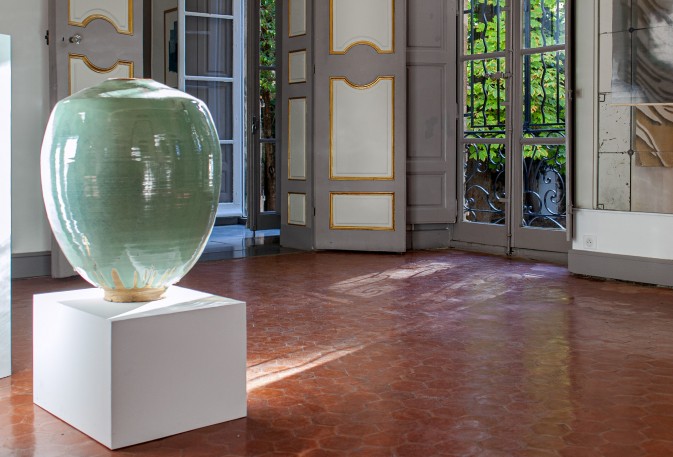Mémoire Désir


Karen Swami plays with materials, fire and oxides, pushing traditional craft techniques to their limits.
Working with sandstone and earthenware, she simplifies volume and enhances colour. The pot becomes an art object, fragile, original, imposing. Her work is full of mystery and shadows, inspired by Etruscan vases yet deeply modern and characterised by perfect lines. Her maxim 'the thought creates the material'; informs much of her work.
In western tradition, once a piece of ceramics is cracked or broken, it is discarded. However, the inevitable cracks inherent in ceramic work can create singular and harmonious designs. Karen repairs cracks with vegetable lacquer (urushi) sprinkled with gold (kintsugi) or silver and sometimes pewter. Instead of being hidden or masked over, the weakness is enhanced.
Her works are thrown and whilst still raw, polished at length with agate. After being fired in an electric kiln the pieces are removed at between 800 and 900°C and submerged in wood shavings. On contact with the blazing ceramics the shavings begin to burn and the smoke penetrates the clay. Karen can modify air exposure and create dense smoke around the piece to bring about a variety of different results.
- What inspired you to work with ceramic?
Karen started making pottery when she was very young. It had been a passion in her personal life, but her career path has taken a completely different turn. After business school, Karen worked in real estate and in feature film production. It was during this time as a producer that she felt the need to return to her first passion. Since then, she has not stopped her passion is both her livelihood and profession.
- How has your work evolved throughout the years? How do you think it could change in the future?
Karen's work evolves according to her inspirations and therefore ultimately her life. The shapes that speak to her, the colours and visual materials she has encountered and the emotions that run through her... Everything is intimately linked and therefore in perpetual movement.
- 'Kintsugi' often appears in your work. What particularly attracted you to this ancient Japanese technique?
The ancient Japanese technique of Kintsugi is a metaphor and a philosophy of life itself: resilience, healing wounds and transforming them into a strength.
She learned this technique when very few people - let alone the general public - knew about it. Initially, it was to find a way to repair pieces that were breaking and cracking when some of them were smoked, which is a technique that weakens the pieces. Kintsugi quickly became an obvious choice, an echo of the way she approaches her life and, ultimately, her work.
- To be rooted to the earth, what does this phrase signify for you?
To be rooted to the earth, this signifies being the author of your life, to be linked to its heritage and ancestors, to nature which welcomes and guides us. To work with the earth is to be linked with it, rooted within it
- Is there a part of your old job that you still employ in your work today?
There is sometimes negotiation and adaptation, with particular or professional clients. And pieces that are made-to-order even if it is not the biggest part of the work
1- Ceramic has become trendier within the last few years. What advice would you give to people wanting to stand out in this field?
To be well trained! As the ceramist profession becomes more fashionable, there is more on offer in various and varied formats. You have to choose your training carefully and be rigorous, it doesn't happen overnight. It takes practice to make it happen. And above all, you have to listen to yourself, follow your instincts and your emotions which guide your creations.

